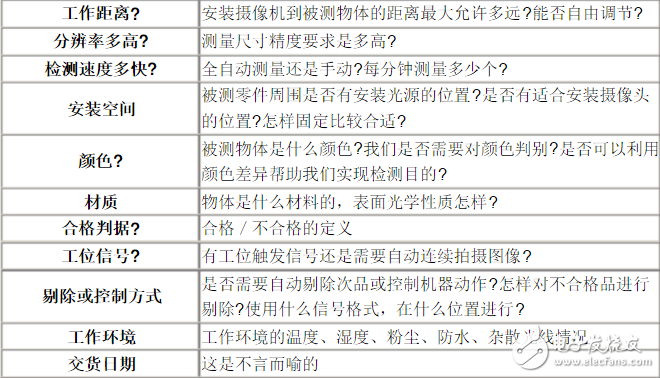As a specific field of optoelectronic technology application, Machine Vision has developed into a promising and dynamic industry with an average annual growth rate of over 20%. Machine vision is widely used in many industries such as microelectronics, electronics, automotive, medical, printing, packaging, scientific research, and military. It involves the same technology and obvious application differences. It is a common feature of various machine vision application systems.
When the machine vision system is integrated, it involves multiple technologies. The most basic system also needs illumination, imaging, image digitization, image processing algorithms, computer software and hardware. The slightly more complicated system also uses mechanical design, sensors, and electronic circuits. , PLC, motion control, database, SPC, etc. It takes high demands on system integrators to combine so many different aspects of technology and knowledge into the system to work together perfectly and steadily. Based on years of experience, the author explains the various technologies involved in machine vision system integration, the factors that need to be considered comprehensively, and the ways to evaluate the likelihood of successful machine vision system projects.
After decades of rapid development, the Chinese economy has completed a transition from nothing to nothing in many areas. Now it has reached the stage of improving production efficiency, product quality and brutal competition. Many of the original manual processes are being used. Gradually replaced by machines, there is an increasing demand for machine vision systems. Machine vision technology was originally developed to solve various problems in production. In human production activities, the human eye is responsible for many important tasks, such as placing and fixing the workpiece, observing and estimating the position, detecting the appearance size, determining the consistency of the product, and checking the quality of the product. These tasks are increasingly being replaced by machine vision systems. On the one hand, as the requirements for production speed and product quality become higher and higher, the requirements for inspection speed and accuracy exceed the capabilities of the naked eye; on the other hand, With the development of imaging technology, computer technology or image processing technology, the tasks that machine vision systems can accomplish are more and more complex and the cost is getting lower and lower. However, machine vision technology as an emerging technology has not been introduced to China for a long time. There are not many experienced system integrators. Machine vision systems involve lighting, imaging, electronics, automatic control, computer software and hardware, and machinery. Design, sensor, optics, etc., integrating these different technologies into one system and making them work perfectly together is a daunting task. This article attempts to give some advice on machine vision system integration technology based on the author's many years of experience. It is expected to help users who use machine vision systems to evaluate their systems and provide reference when making sound decisions, and to provide technical personnel and companies to develop systems. Some successful experiences. This article will cover the aspects of requirements analysis, resource allocation, and system integration.
A, demand analysis Accurately describing the functions and work environments that a machine vision system needs to accomplish is critical to the successful integration of the entire machine vision system. For the description of the requirements, the scene of the vision system work is actually defined, and designing a system around this scene to obtain the appropriate image, and extracting useful information or controlling the production process is the goal of our work. This step seems so simple that it is often overlooked. Sometimes users have some kind of demand in the production process, but due to knowledge and technical reasons, users do not know what kind of vision system they need, or can not accurately describe their needs, and then system integrators own experience Insufficient or not given enough attention, can not help users to specify the functional details of the system, this system integration development process is destined to detour, or even ultimately fail.
So, the first step in system integration is to clarify user needs! In general, the following table can be used to help us achieve this goal.


Phase Control Thyristor is the abbreviation of thyristor, also known as silicon controlled rectifier, formerly referred to as thyristor; thyristor is PNPN four-layer semiconductor structure, it has three poles: anode, cathode and control pole; thyristor has silicon rectifier The characteristics of the parts can work under high voltage and high current conditions, and their working processes can be controlled and widely used in electronic circuits such as controlled rectifiers, AC voltage regulators, contactless electronic switches, inverters, and inverters.
Phase Control Thyristor,Ir Phase Control Thyristor,Stud Phase Control Thyristor,Electronic Component Phase Control Thyristor,High Power Phase Control Thyristor
YANGZHOU POSITIONING TECH CO., LTD. , https://www.yzpst.com